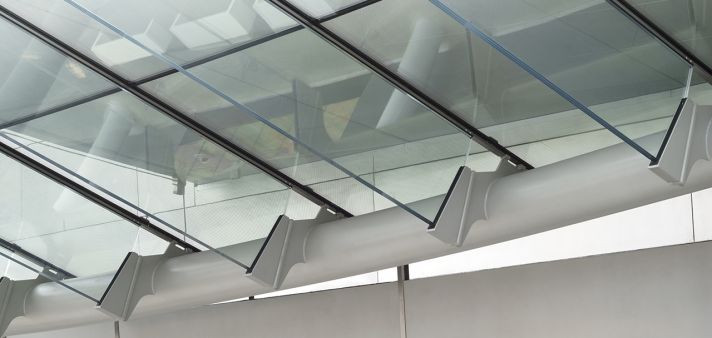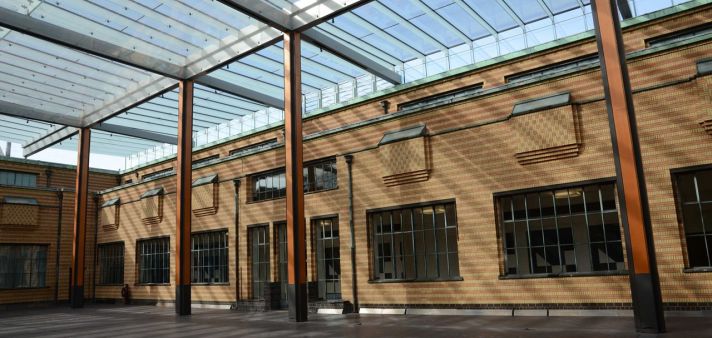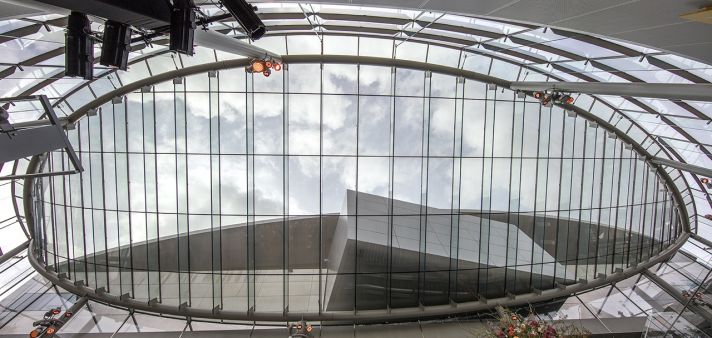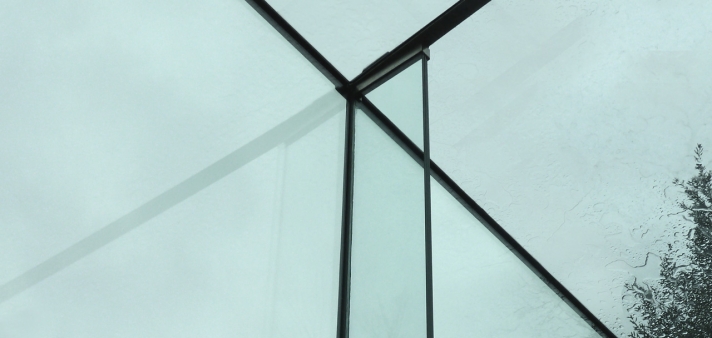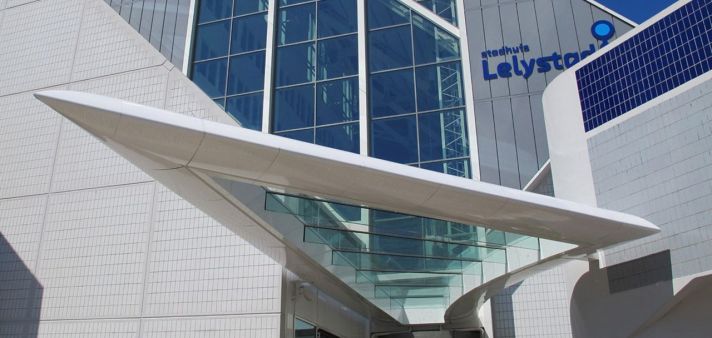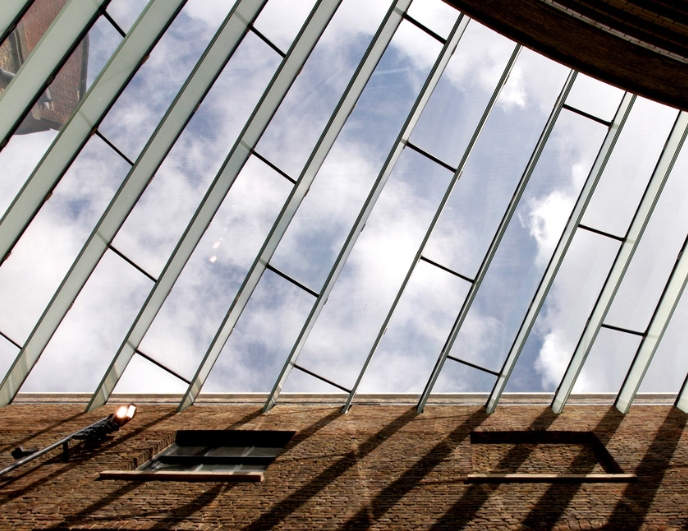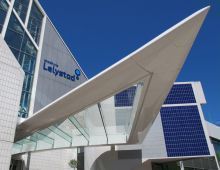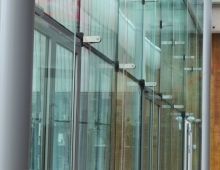Do you have innovative ideas, dreams or designs that are seemingly impossible? We are eager to solve your architectural challenges! Contact us so we can be of assistance.
Glass fins
When it comes to all-glass structures, the most commonly used elements are glass fins. These building components utilize the full potential of glass as a structural material, and at the same time yield maximum transparency and an unobstructed open view.
Glass fins eliminate the need for conventional metal mullions and beams. In facades and roofs the glass fins can be structurally used to transfer horizontal and vertical loads from e.g. wind and snow to the structure.
Various connections can be used to transfer loads from the façade or rooflight to the glass fins, i.e. clamping nodes, Quattro’s or a bonded connection.
As a leading design & build party in structural glass technologies, Octatube has long been able to translate architectural concepts for transparent rooflights and facades into bespoke and high-end projects, such as the Victoria & Albert Museum in London, where the longest of 73 unique fins has a free span of 11 meters.
Currently it is possible to make glass fins up to 18 meters long. It is also possible to compose a long fin out of shorter fins by using splice plates. Usually, glass fins are composed of a combination of 2 or more layers of tempered glass. In combination with a wide array of glass types such as low-iron or colored glass and the application of frit patterns and translucent interlayers, architects have numerous possibilities.

